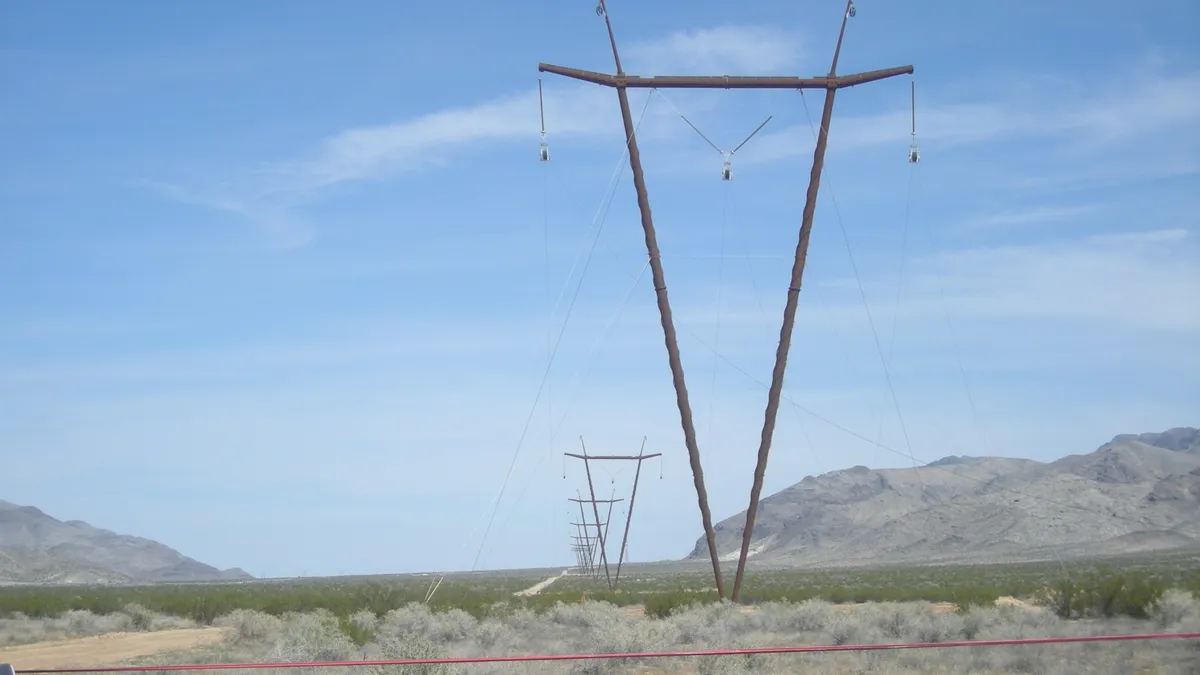Dive Brief:
- Nevada Gov. Joe Lombardo, R, on Thursday signed legislation updating the state’s utility planning process while also opening a path for NV Energy to own more renewable generation and battery facilities.
- AB 524 allows the utility to file integrated resource plans more frequently than once every three years, as state law previously mandated. Conservation activists say the change will provide greater scrutiny of NV Energy’s resource procurement. The law also requires the Public Utilities Commission of Nevada, or PUCN, to develop additional rules governing how IRP amendments can be proposed.
- NV Energy supports the new law, which allows it to propose an IRP scenario to the PUCN in which it owns a “significant share” of new renewable energy generation and energy storage. Experts say regulators have infrequently approved utility-owned projects in the state, instead favoring contracts with independent power producers.
Dive Insight:
Clean energy advocates and conservation groups say AB 524 makes significant improvements to the state’s IRP process — and if NV Energy can build new resources at the lowest cost, then so be it.
“If that makes sense for Nevadans, sure. But it needs to go through the IRP process,” said Christi Cabrera-Georgeson, deputy director of the Nevada Conservation League.
NV Energy last year proposed a 400 MW gas peaker plant through an IRP amendment. It was approved in March, but opponents say the process did not allow for sufficient public input or review.
“We saw a lot of people say, during the bill hearing, ‘this is exactly why we need this bill,’” Cabrera-Georgeson said. Changes to the IRP process will ensure regulators are “hearing from stakeholders, looking at what matters to Nevada,” and the law closes “loopholes” such as allowing a large gas plant to be approved in an IRP amendment, she said.
There will be some additional burden associated with more frequent IRPs but the tradeoff benefits consumers, said Hunter Holman, Nevada clean energy manager for Western Resource Advocates.
“Increasing the frequency of IRPs is vital to truly understand what resources may be least cost, least risk in maintaining reliable service for customers,” Holman said in an email. “We’re also looking forward to discussing additional revisions to NV Energy’s IRP process through the regulatory investigation that the PUCN initiated.”
Western Resource Advocates wants to see updates to all “key assumptions,” like reliability studies, for major resource additions proposed in an IRP docket, Holman said.
NV Energy supported the bill in its final form, noting that “like the rest of the West, Nevada is facing a serious problem obtaining energy on the open market during peak demand periods.”
Nevada has a renewable portfolio requirement 50% by 2030 and the new law will help to meet that, the utility said.
NV Energy “looks forward to proposing a bold plan to mitigate reliance on these expensive market purchases and reduce the risk of rolling blackouts,” the company said.
The PUCN has not frequently approved utility-owned renewables because NV Energy can often contract with independent power producers at a lower cost, according to Advanced Energy United and Interwest Energy Alliance.
“What Nevada needs most is fair, regular, predictable competitive solicitations for energy resources so that developers can offer the state their best and most innovative projects,” Sam Johnston, policy manager at Interwest, said in a statement. “The more project options that are on the table, the easier it is for the commission to find the mix that guarantees most reliable service at lowest cost to Nevadans.”
"Enabling NV Energy to preference utility-owned resources without the guardrails afforded by truly competitive solicitations ultimately undermines the state’s goal for affordable, clean energy,” said Sarah Steinberg, policy director at Advanced Energy United. “It may put private investment, and the state’s regional clean energy leadership, at risk.”















